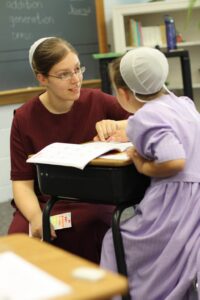Specific Learning Disabilities
★★★★★

“Learning disability” is a term that has a history that is broad, varied, and astonishingly disputed, given how popular the term is. The legal definition for learning disability comes from the federal law IDEA: “Specific learning disability means a disorder in one or more of the basic psychological processes involved in understanding or in using language, spoken or written, that may manifest itself in the imperfect ability to listen, think, speak, read, write, spell, or to do mathematical calculations, including conditions such as perceptual disabilities, brain injury, minimal brain dysfunction, dyslexia, and developmental aphasia. Specific learning disability does not include learning problems that are primarily the result of visual, hearing, or motor disabilities, of mental retardation, of emotional disturbance, or of environmental, cultural, or economic disadvantage.”
In other words, (1) the child is not learning sufficiently (2) due to something about the learning process within the child (3) that cannot be explained by any other factor (such as lack of exposure to school, vision impairment, etc.). It is important to note that students with learning disabilities are capable of learning (which is why “dis” + “ability” may not be the best term). However, they learn best with very specific methods of teaching that are tailored to their unique ways of learning. In other words, in “specific” ways, they learn differently, and if presented only with the same curriculum as their peers, they will likely fail to learn at adequate levels.
Types of Specific Learning Disability
In broad terms, there are four main areas in which learning disabilities can occur—reading, writing, math, or oral language. Within these broad categories are 8 specific subtypes of SLD, and the areas of difficulty can be described as follows:
- Basic reading skills: decoding (sounding out) words using basic phonics skills, sound awareness, letter-sound knowledge, and basic spelling skills
- Reading fluency: speed and accuracy of reading
- Reading comprehension: comprehension of written material—retelling a story and/or answering questions about text, particularly questions that involve higher order thinking skills
- Written expression: thought organization, sentence structure, word choice, logical flow, and/or mechanics (capitalization & punctuation) of writing
- Math calculations: basic math fact knowledge and/or math calculations, including long addition/subtraction/multiplication/division as well as calculations with fractions, decimals, powers, and algebraic equations
- Math problem-solving: solving story problems and applying math concepts, such as time, measurement, and geometry
- Oral expression: organization, sentence structure, and word choice when the child is speaking
- Listening comprehension: comprehension of orally presented material

Overlap of categories
It is possible to have a specific learning disability in more than one of these eight areas. However, it is just as likely for one core SLD to cause problems in other areas. The classic example is a child who struggles mightily to sound out the words on the page (basic reading skills) and therefore fails to understand what she just read (reading comprehension) due to her mistakes and/or the amount of energy it took to read individual words. Likely, her SLD is in basic reading skills, and once she learns to read fluently, her reading comprehension will be fine. In addition, her difficulty in decoding text may result in numerous mistakes with math word problems—not because of a math concept deficit, but because of inaccuracies reading the story problems.
https://sites.ed.gov/idea/regs/b/a/300.8/c/10Read Lynelle’s previous blog posts in the series, “Defining the Terms”:
https://thedockforlearning.org/contributions/history-and-frequency-of-special-education/
https://thedockforlearning.org/contributions/what-is-dyslexia/
https://thedockforlearning.org/contributions/myths-about-dyslexia/
Related Items
Leave a Reply
Feedback